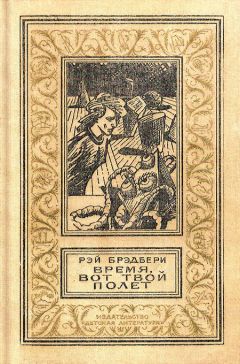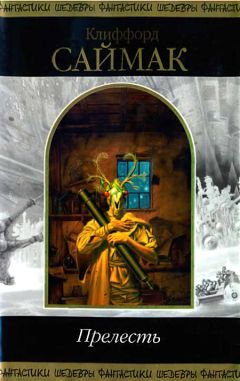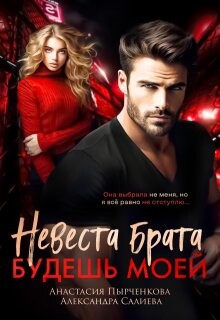Эдвард Уилсон - Хозяева Земли

Помощь проекту
Хозяева Земли читать книгу онлайн
Ограничения и вариативность грамматики. Daniel Nettle, «Language and genes: A new perspective on the origins of human cultural diversity» Proceedings of the National Academy of Sciences, U.S.A. 104(26):10755-10756 (2007).
Теплый климат и акустическая эффективность. John G. Fought et al., «Sonority and climate in a world sample of languages: Findings and prospects» Cross-Cultural Research 38: 27–51 (2004).
Роль генов и высоты звука в дифференциации языков. Dan Dediu and D. Robert Ladd, «Linguistic tone is related to the population frequency of the adaptive haplogroups of two brain size genes, ASPM and Microcephalin» Proceedings of the National Academy of Sciences, U.S.A. 104(26):10944-10949 (2007).
Недавно возникшие языки. Derek Bickerton, Roots of Language (Ann Arbor, Ml: Karoma, 1981); Michael DeGraff, ed., Language Creation and Language Change: Creolization, Diachrony, and Development (Cambridge, MA: MIT Press, 1999).
Язык жестов бедуинов Аль-Сайид. Wendy Sandler et al., «The emergence of grammar: Systemic structure in a new language» Proceedings of the National Academy of Sciences, U.S.A. 102(7): 2661–2665 (2005).
Естественный порядок при невербальной коммуникации. Susan Goldin-Meadow et al., «The natural order of events: How speakers of different languages represent events nonverbally» Proceedings of the National Academy of Sciences, U.S.A. 105(27): 9163–9168 (2008).
Отсутствие «языкового модуля». Nick Chater, Florencia Reali, and Morten H. Christiansen, «Restrictions on biological adaptation in language evolution» Proceedings of the National Academy of Sciences, U.S.A. 106(4): 1015–1020 (2009).
23. Эволюция культурной вариативностиСтратегия «подстраховки» и эволюция пластичности. Vincent A. A. Jansen and Michael P. H. Stumpf, «Making sense of evolution in an uncertain world» Science 309: 2005–2007 (2005).
Гены, кодирующие белки, регуляторные гены и развитие организма. Rudolf A. Raff and Thomas C. Kaufman, Embryos, Genes, and Evolution: The Developmental-Genetic Basis of Evolutionary Change (New York: Macmillan, 1983; reprint, Bloomington: Indiana University Press, 1991); David A. Garfield and Gregory A. Wray, «The evolution of gene regulatory interactions» BioScience 60:15–23 (2010).
Адаптивная пластичность и продолжительность жизни у каст муравьев. Edward O. Wilson, The Insect Societies (Cambridge, MA: Harvard University Press, 1971); Bert Hölldobler and Edward O. Wilson, The Superorganism: The Beauty, Elegance, and Strangeness of Insect Societies (New York: W. W. Norton, 2009).
24. Истоки морали и честиБиологическое обоснование «золотого правила» нравственности. Donald W. Pfaff, The Neuroscience of Fair Play: Why We (Usually) Follow the Golden Rule (New York: Dana Press, 2007).
Загадка коллективного поведения. Ernst Fehrand Simon Gächter, «Altruistic punishment in humans» Nature 415:137–140 (2002).
Групповой отбор и эволюционная загадка сотрудничества. Robert Boyd, «The puzzle of human sociality» Science 314:1555–1556 (2006); Martin Nowak, Corina Tarnita, and Edward O. Wilson, «The evolution of eusociality» Nature 466: 1059–1062 (2010).
Косвенная взаимность. Martin A. Nowak and Karl Sigmund, «Evolution of Indirect reciprocity» Nature 437:1291–1298 (2005); Gretchen Vogel, «The evolution of the Golden Rule» Science 303:1128–1131 (2004).
Разнообразие функций юмора. Matthew Gervais and David Sloan Wilson, «The evolution and functions of laughter and humor: A synthetic approach» Quarterly Review of Biology 80: 395–430 (2005).
Истинный альтруизму человека. Robert Boyd, «The puzzle of human sociality» Science 314:1555–1556 (2006).
Групповой отбор и альтруизм. Samuel Bowles, «Group competition, reproductive leveling, and the evolution of human altruism» Science 314:1569–1572 (2006).
Экономическое расслоение и качество жизни. Michael Sargent, «Why inequality is fatal» Nature 458:1109–1110 (2009); Richard G. Wilkinson and Kate Pickett, The Spirit Level: Why More Equal Societies Almost Always Do Better (New York: Allen Lane, 2009).
Альтруистическое наказание. Robert Boyd et al., «The evolution of altruistic punishment» Proceedings of the National Academy of Sciences, U.S.A. 100(6): 3531–3535 (2003); Dominique J.-F. de Quervain et al., «The neural basis of altruistic punishment» Science 305:1254–1258 (2004); Christoph Hauert et al., «Via freedom to coercion: The emergence of costly punishment» Science 316:1905–1907 (2007); Benedikt Herrmann, Christian Thöni, and Simon Gächter, «Antisocial punishment across societies» Science 319:1362–1367 (2008); Louis Putterman, «Cooperation and punishment» Science 328: 578–579 (2010).
25. Истоки религииВера в Бога среди ученых. Gregory W. Graffin and William B. Provine, «Evolution, religion, and free will» American Scientist 95(4)1294–297 (2007).
Религия в США и Европе. Phil Zuckerman, «Secularization: Europe — Yes, United States — No» Skeptical Inquirer 28(2): 49–52 (March/April 2004).
Деизм и целенаправленность сотворения мира. Thomas Dixon, «The shifting ground between the carbon and the Christian» Times Literary Supplement, pp. 3–4 (22 and 29 December 2006).
Универсальные этические принципы и нравственный закон. Paul R. Ehrlich, «Intervening in evolution: Ethics and actions» Proceedings of the National Academy of Sciences, U.S.A. 98(10): 5477–5480 (2001); Robert Pollack, «DNA, evolution, and the moral law» Science 313:1890–1891 (2006).
Когнитивная предрасположенность к религиозным верованиям. Pascal Boyer, «Religion: Bound to believe?» Nature 455:1038–1039 (2008).
Деятельность мозга и игра воображения. J. Allan Cheyne and Bruce Bower, «Night of the crusher» Time, pp. 27–29 (19 July 2005). Связь между функционированием мозга и верой в сверхъестественное, а также видениями основателей религий и пророков подробно освещена в работах разных авторов, опубликованных в сборнике: Neurotheology: Brain, Science, Spirituality, Religious Experience, ed. Rhawn Joseph (San Jose, CA: University of California Press, 2002).
Галлюцинации, вызванные айяуаской. Frank Echenhofer, «Ayahuasca shamanic visions: Integrating neuroscience, psychotherapy, and spiritual perspectives» in Barbara Maria Stafford, ed., A Field Guide to a New Meta-Field: Bridging the Humanities-Neurosciences Divide (Chicago: University of Chicago Press, 2011). Видения, которые цитирует Эхенхофер, были записаны антропологом Мильтиадом Чавесом и психиатром Клаудио Наранхо.
Галлюциногены и пророки. Richard C. Schultes, Albert Hoffmann, and Christian Rätsch, Plants of the Gods: Their Sacred, Healing, and Hallucinogenic Powers, rev. ed. (Rochester, VT: Healing Arts Press, 1998).
Эволюционные шаги к современной религии. Robert Wright, The Evolution of God (New York: Little, Brown, 2009).
26. Истоки искусстваОптическая активация и визуальный дизайн. Gerda Smets, Aesthetic Judgment and Arousal: An Experimental Contribution to Psycho-Aesthetics (Leuven, Belgium: Leuven University Press, 1973).
Биофилия и предпочтения при выборе мест для жилья. Gordon H. Orians, «Habitat selection: General theory and applications to human behavior» в книге: Joan S. Lockard, ed., The Evolution of Human Social Behavior (New York: Elsevier, 1980), pp. 49–66; Edward O. Wilson, Biophilia (Cambridge, MA: Harvard University Press, 1984); Stephen R. Kellert and Edward O. Wilson, eds., The Biophilia Hypothesis (Washington, DC: Island Press, 1993); Stephen R. Kellert, Judith H. Heerwagen, and Martin L. Mador, eds., Biophilic Design: The Theory, Science, and Practice of Bringing Buildings ta Life (Hoboken, NJ: Wiley, 2008); Timothy Beatley, Biophilic Cities: Integrating Nature into Urban Design and Planning (Washington, DC: Island Press, 2011).
«Художественная» правда. E. L. Doctorow, «Notes on the history of fiction» Atlantic Monthly Fiction Issue, pp. 88–92 (August 2006).
Возникновение изобразительных искусств. Michael Balter, «On the origin of art and symbolism» Science 323: 709–711 (2009); Elizabeth Culotta, «On the origin of religion» Science 326:784–787 (2009).
Трактовка пещерной живописи эпохи палеолита. R. Dale Guthrie, The Nature of Paleolithic Art (Chicago: University of Chicago Press, 2005); William H. McNeill, «Secrets of the cave paintings» New York Review of Books, pp. 20–23 (19 October 2006); Michael Balter, «Going deeper into the Grotte Chauvet» Science 321:904–905 (2008).
Музыкальные инструменты эпохи палеолита. Lois Wingerson. «Rock music: Remixing the sounds of the Stone Age» Archaeology, pp. 46–50 (September/October 2008).
Песни и танцы охотников и собирателей. Cecil Maurice Bowra, Primitive Song (London: Weidenfeld & Nicolson, 1962): Richard B. Lee and Richard Heywood Daly, eds.. The Cambridge Encyclopedia of Hunters and Gatherers (New York: Cambridge University Press, 1999).
Связь между языком и музыкой. Aniruddh D. Patel, «Music as a transformative technology of the mind» в книге: Aniruddh D. Patel, Music, Language, and the Brain (Oxford: University of Oxford Press, 2008).
27. На пороге нового просвещенияПолемика по поводу теории совокупной приспособленности. Martin A. Nowak, Corina E. Tarnita, and Edward O. Wilson, «The evolution of eusociality» Nature 466:1059–1062 (2010): критические отзывы: Nature, March 2011, online.
Глобализация и расширение границ группы, с которой идентифицирует себя человек. Nancy R. Buchan et al., «Globalization and human cooperation» Proceedings of the National Academy of Sciences, U.S.A. 106(11): 4138–4142 (2009).
Примечания
1
Уолден, или Жизнь в лесу (перевод 3. Е. Александровой). — Здесь и далее примеч. пер.
2
Откуда мы пришли? / Кто мы? / Куда мы идем? (фр.)
3
Около 635 км по прямой.
4
Ч. Дарвин. «Происхождение человека и половой отбор». Пер. И. М. Сеченова (1896 г.).
5
Книга Судей Израилевых 12: 5–6.
6
Уильям Джемс (William James) (1842–1910) — американский философ и психолог, один из основателей и ведущий представитель прагматизма и функционализма. — Примеч. ред.
7
Здесь: «на краю смерти» (дот.).
8
Пер. Ю. А. Голубкина.
9
Фукидид. История. / Пер. Г. А. Стратановского.
10
Два других «закона» поведенческой генетики, сформулированные Эриком Туркхаймером, гласят: «Влияние воспитания в одной и той же семье меньше, чем влияние генов» и «Существенная часть изменчивости сложных поведенческих признаков у человека не объясняется ни генами, ни семейным воспитанием».

























